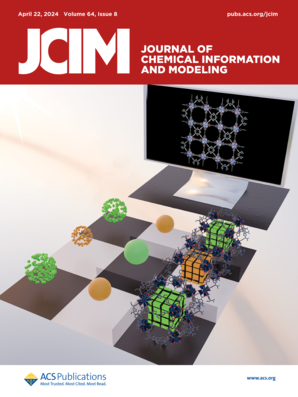Pan-Cancer Analysis of G Protein-Coupled Receptors as Cancer Driver Genes and Drug Repurposing Targets.
IF 5.6
2区 化学
Q1 CHEMISTRY, MEDICINAL
引用次数: 0
Abstract
G protein-coupled receptors (GPCRs), the largest family of currently approved drug targets, are rarely targeted for cancer therapy. There is limited research on the role of GPCRs in pan-cancer, particularly regarding the underlying causes of their abnormal expression. The abnormal expression of GPCRs in tumors has generally been attributed to mutations and promoter methylation. However, transcriptional regulatory elements of GPCRs, such as G-quadruplexes (G4s), superenhancers (SEs), and mRNA structure, remain poorly understood. Then, these regulatory elements were explored by utilizing PRECOG, ROSE, and ViennaRNA algorithms. Meanwhile, cancer prognosis-related GPCRs were found based on different expression analyses and Cox regression. A total of 326 differentially expressed GPCRs were then identified, with 3,151 significant HR (hazard ratios) records in pan-cancer. Notably, most cancer prognosis-related GPCRs are coupled with Gi (GNAI1, GNAI2, and GNAI3) and Gq/11 signaling pathways. Moreover, G4s, SEs, and mRNA structure could be utilized to explain some of the abnormal expression for cancer prognosis-related GPCRs. Additionally, some of these GPCRs have known drug targets such as GCGR, CXCR4, GPR55, and so on. For an example of drug repurposing, four drugs (i.e., theophyline, caffeine, enprofylline, and flavone) were found that could be combined with immunotherapy for PAAD therapy patients. Finally, we developed GPCR-PCA (G protein-coupled receptors in pan-cancer), a web-based tool that provides fast, customizable queries based on our GPCR-related cancer analysis to facilitate clinical research targeting GPCRs. GPCR-PCA is available at http://gpcrpca.lsbz.store/.G蛋白偶联受体作为癌症驱动基因和药物重定向靶点的泛癌分析。
G蛋白偶联受体(gpcr)是目前批准的药物靶点中最大的家族,但很少被用于癌症治疗。关于gpcr在泛癌中的作用的研究有限,特别是关于其异常表达的潜在原因。肿瘤中gpcr的异常表达通常归因于突变和启动子甲基化。然而,gpcr的转录调控元件,如g -四联体(G4s)、超增强子(se)和mRNA结构,仍然知之甚少。然后,利用PRECOG、ROSE和ViennaRNA算法对这些调控要素进行了探索。同时,通过不同表达分析和Cox回归,发现与肿瘤预后相关的gpcr。总共鉴定出326个差异表达的gpcr,其中有3151个在泛癌中有显著的HR(风险比)记录。值得注意的是,大多数与癌症预后相关的gpcr与Gi (GNAI1、GNAI2和GNAI3)和Gq/11信号通路偶联。此外,G4s、SEs和mRNA结构可以解释一些与癌症预后相关的gpcr的异常表达。此外,其中一些gpcr具有已知的药物靶点,如GCGR、CXCR4、GPR55等。以药物再利用为例,发现四种药物(即茶碱、咖啡因、enprofylline和黄酮)可与PAAD治疗患者的免疫治疗联合使用。最后,我们开发了GPCR-PCA(泛癌中的G蛋白偶联受体),这是一个基于网络的工具,可以基于我们的gpcr相关癌症分析提供快速,可定制的查询,以促进针对gpcr的临床研究。GPCR-PCA可在http://gpcrpca.lsbz.store/上获得。
本文章由计算机程序翻译,如有差异,请以英文原文为准。
求助全文
约1分钟内获得全文
求助全文
来源期刊
CiteScore
9.80
自引率
10.70%
发文量
529
审稿时长
1.4 months
期刊介绍:
The Journal of Chemical Information and Modeling publishes papers reporting new methodology and/or important applications in the fields of chemical informatics and molecular modeling. Specific topics include the representation and computer-based searching of chemical databases, molecular modeling, computer-aided molecular design of new materials, catalysts, or ligands, development of new computational methods or efficient algorithms for chemical software, and biopharmaceutical chemistry including analyses of biological activity and other issues related to drug discovery.
Astute chemists, computer scientists, and information specialists look to this monthly’s insightful research studies, programming innovations, and software reviews to keep current with advances in this integral, multidisciplinary field.
As a subscriber you’ll stay abreast of database search systems, use of graph theory in chemical problems, substructure search systems, pattern recognition and clustering, analysis of chemical and physical data, molecular modeling, graphics and natural language interfaces, bibliometric and citation analysis, and synthesis design and reactions databases.

 求助内容:
求助内容: 应助结果提醒方式:
应助结果提醒方式:


